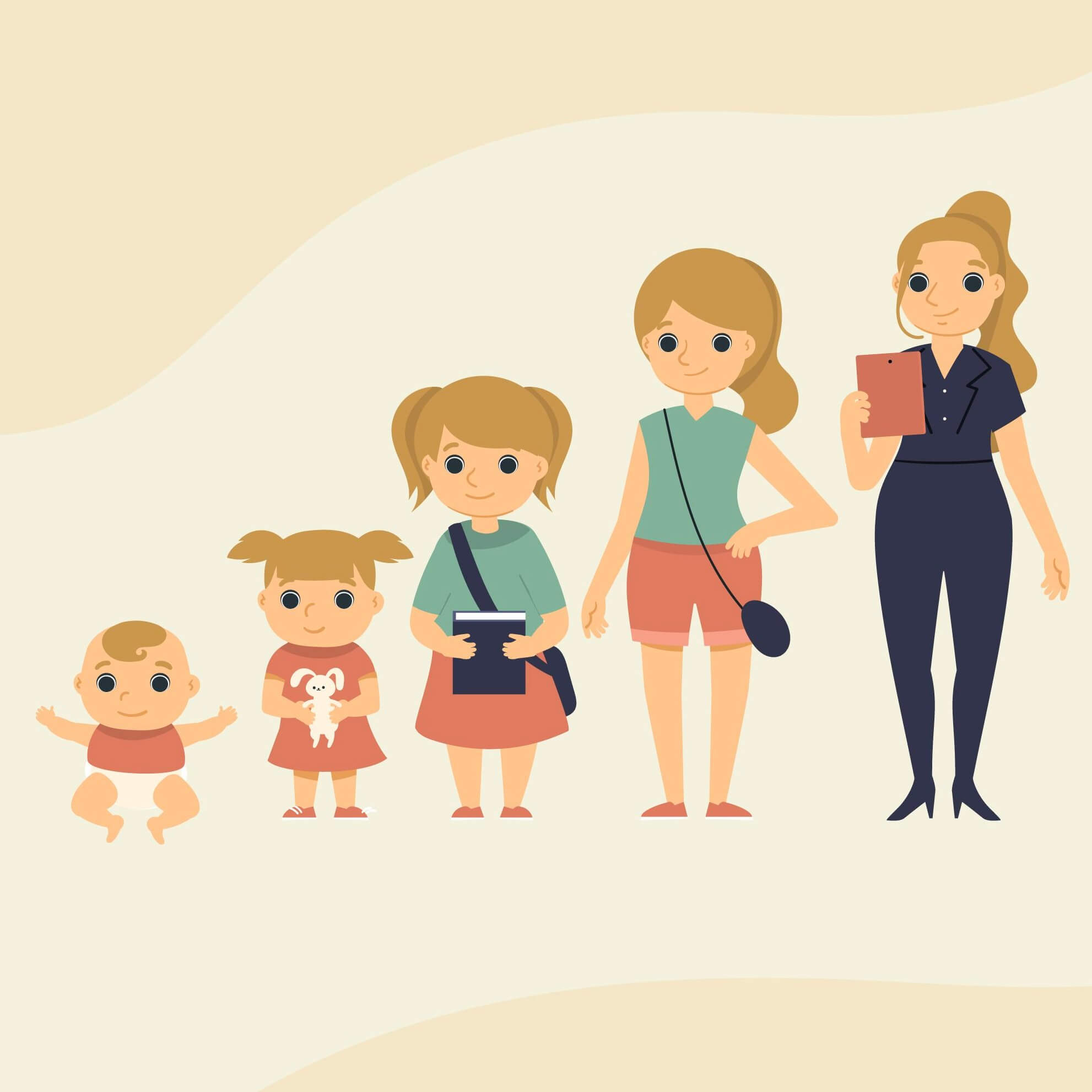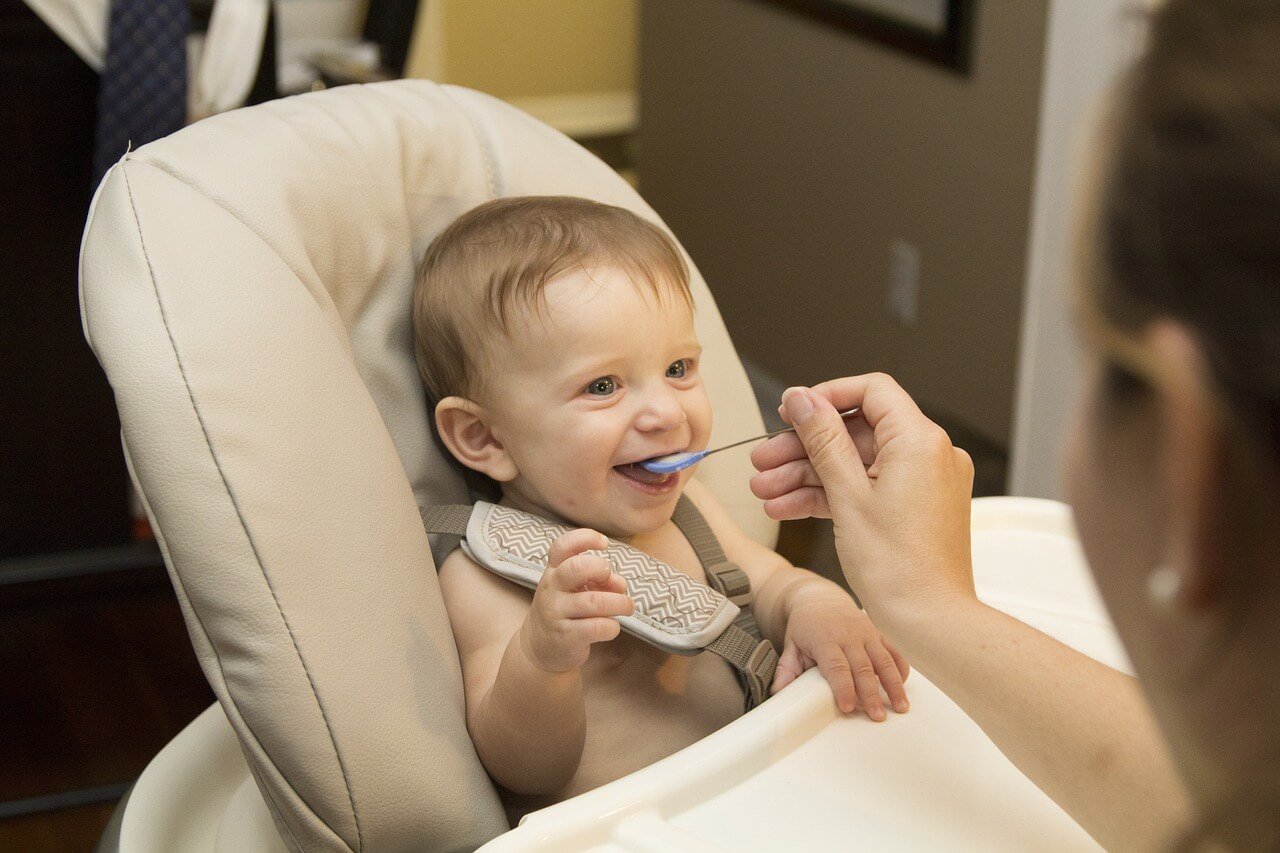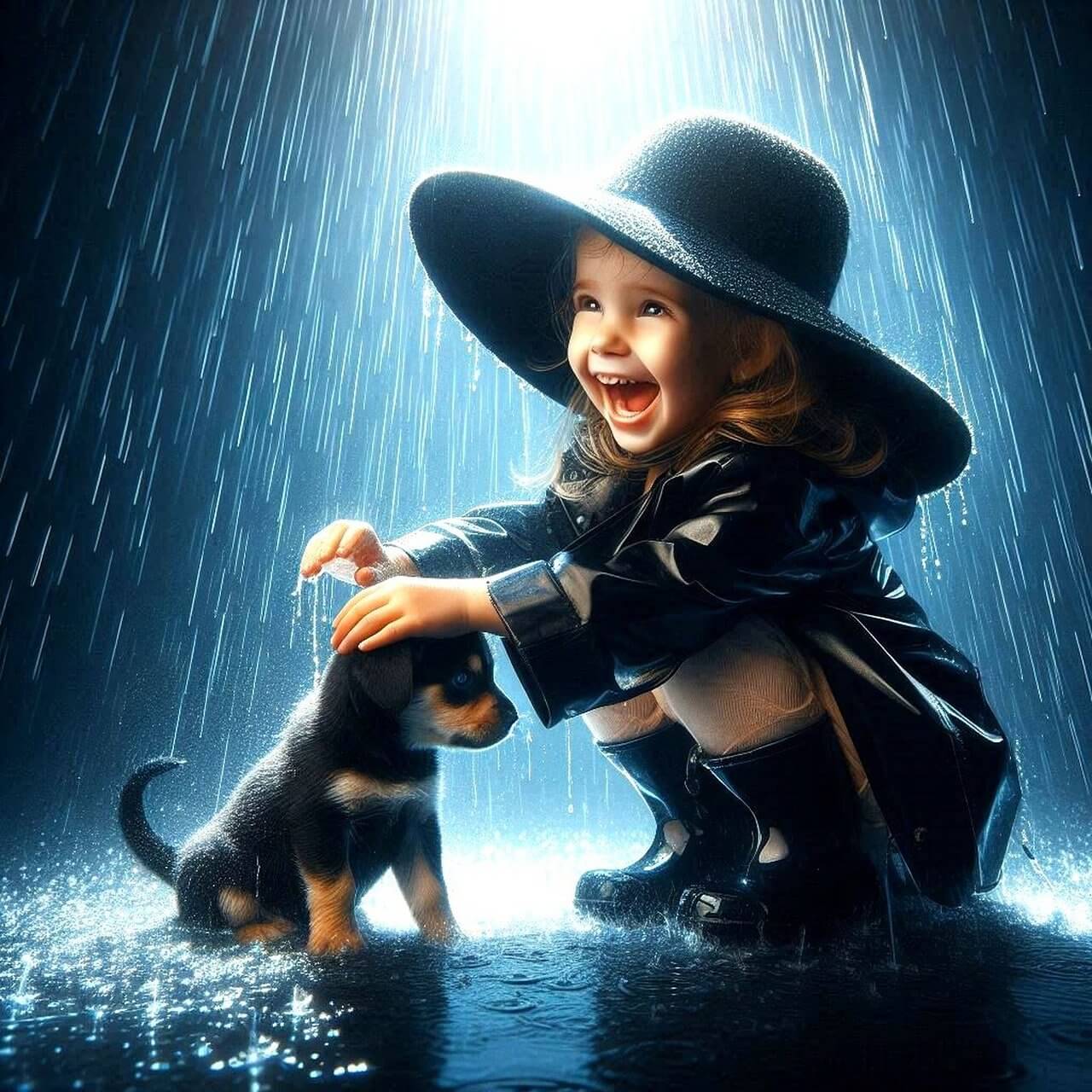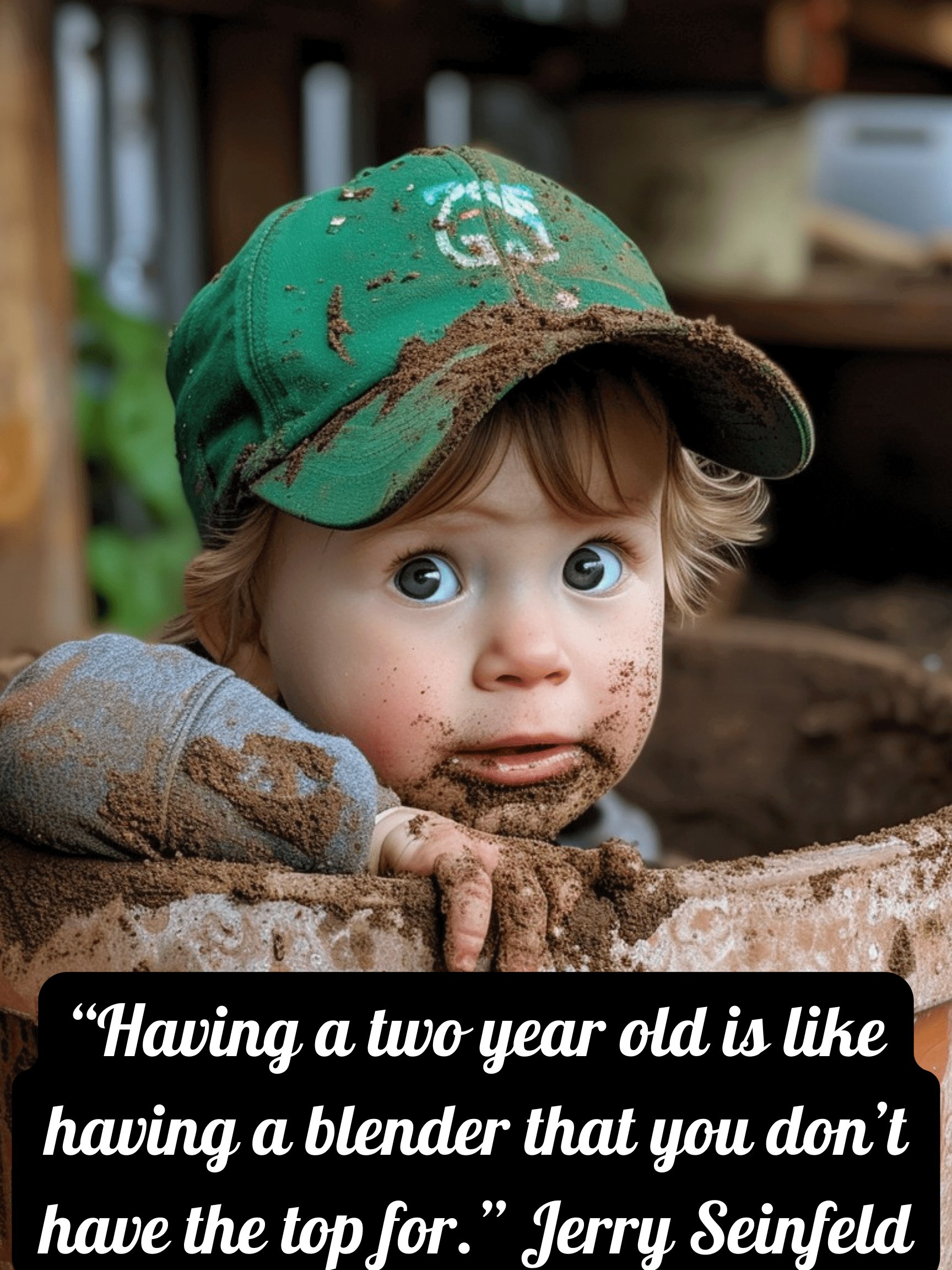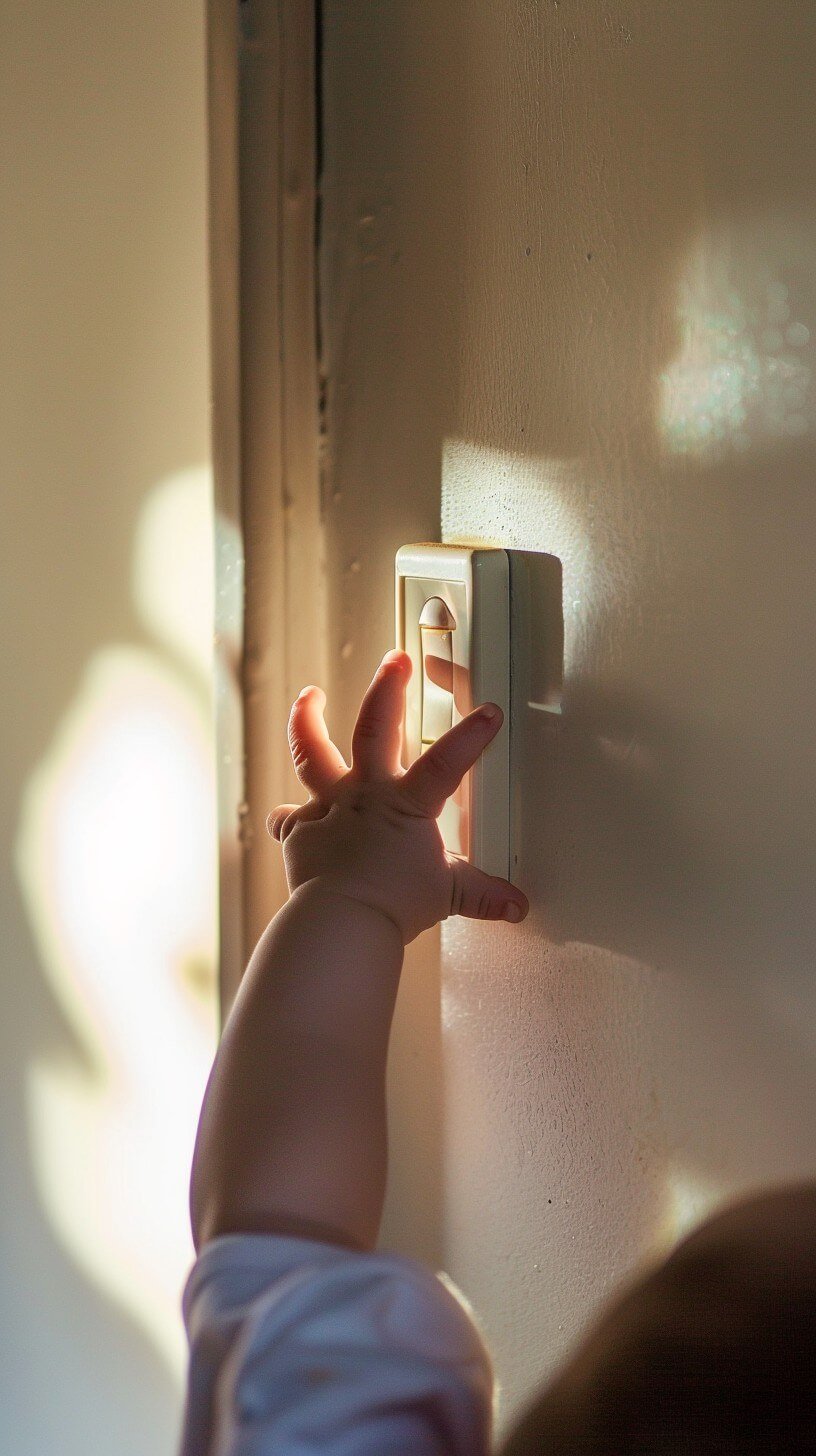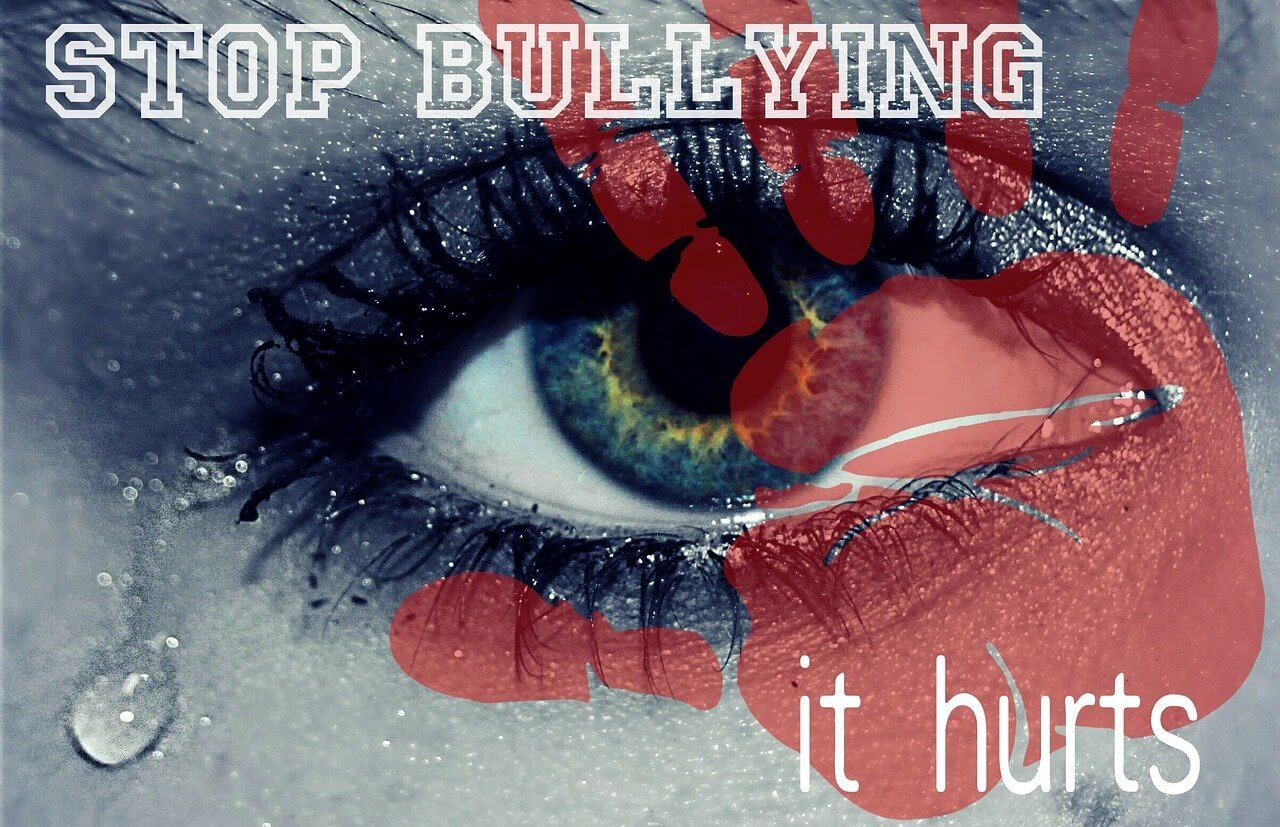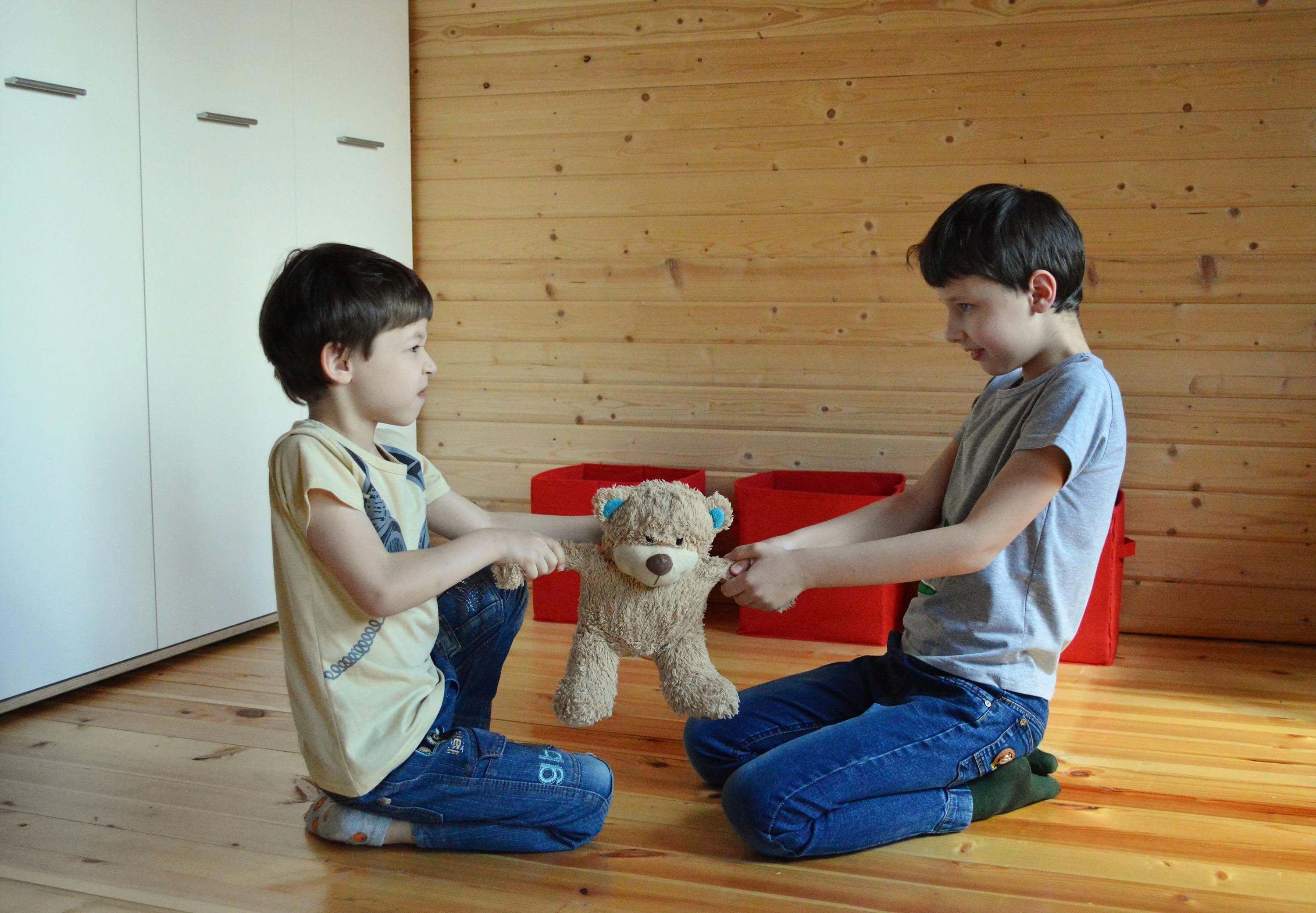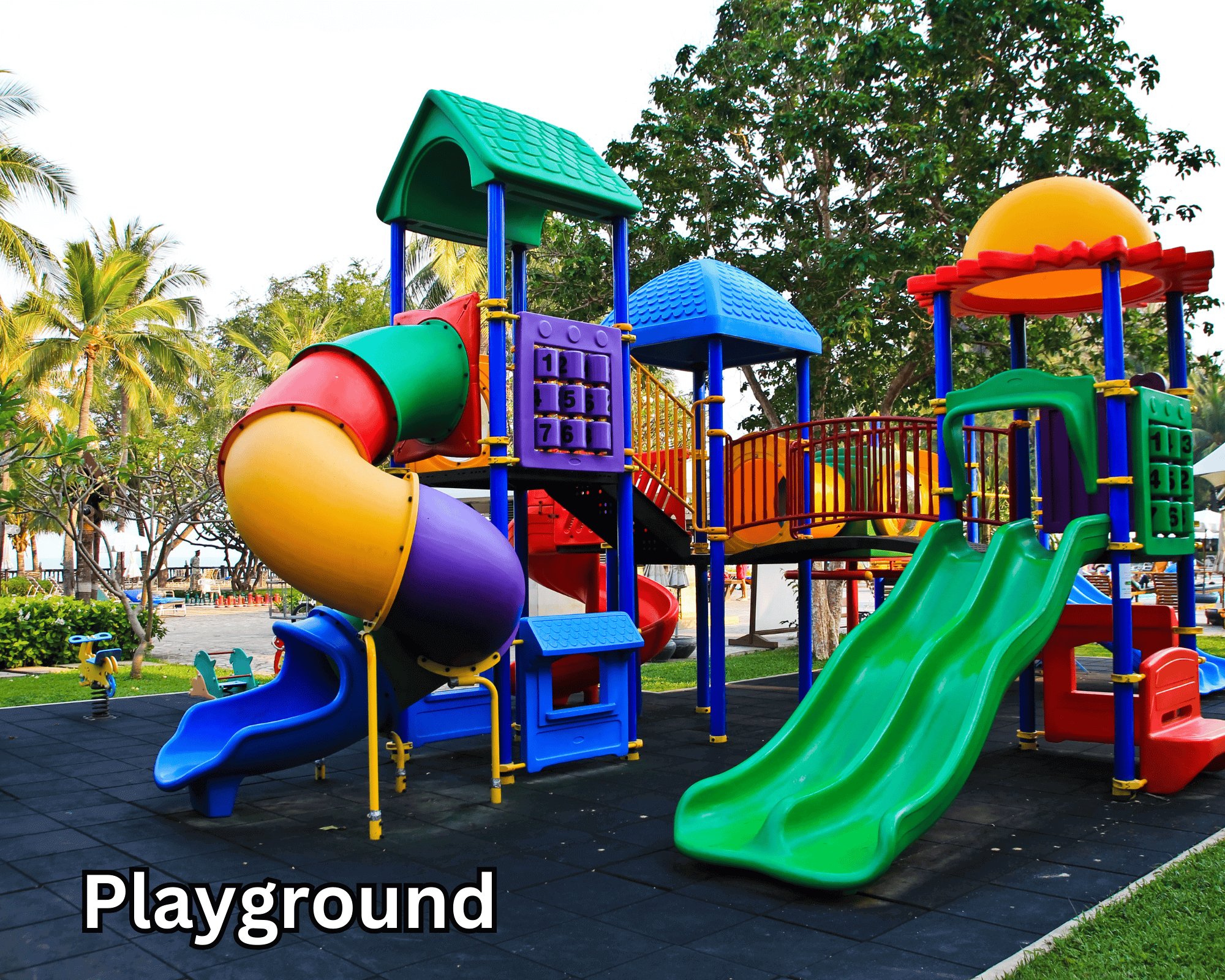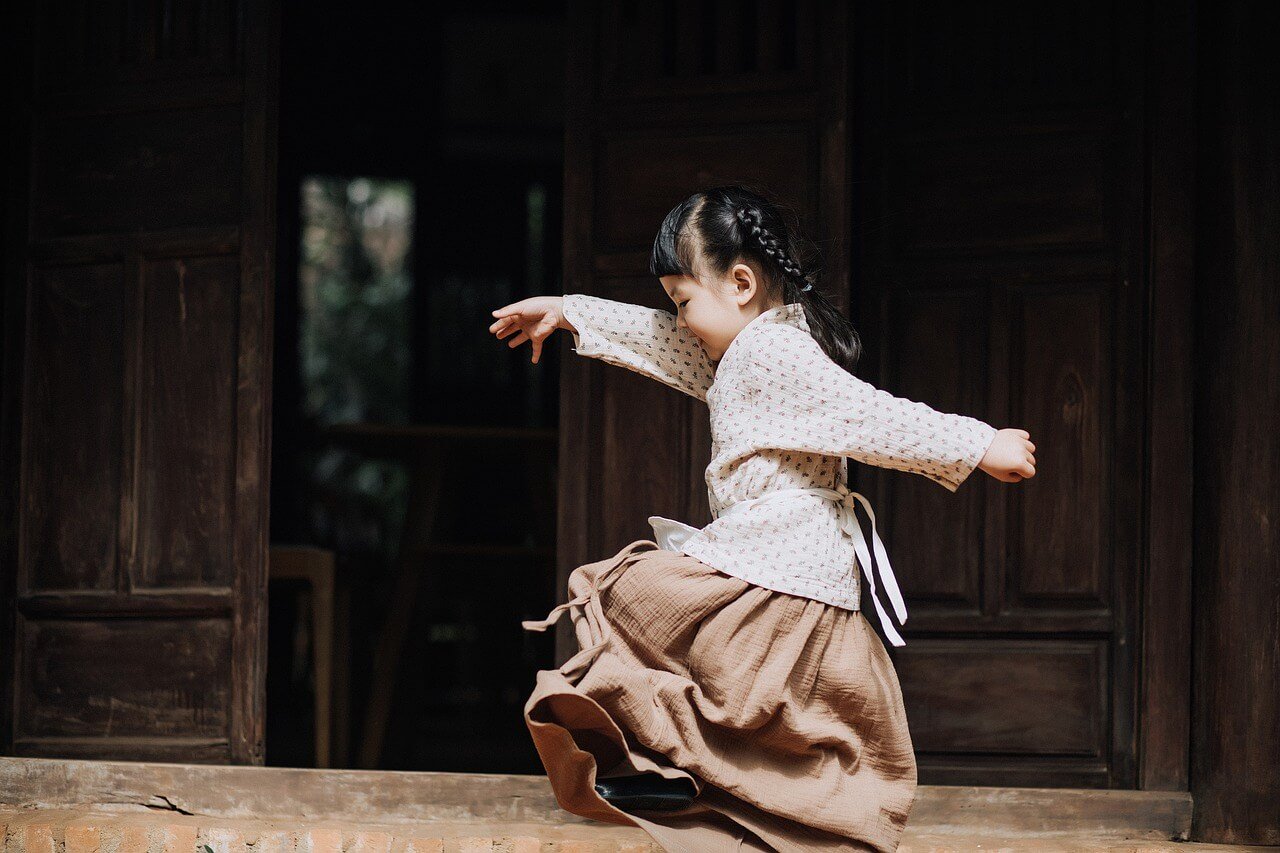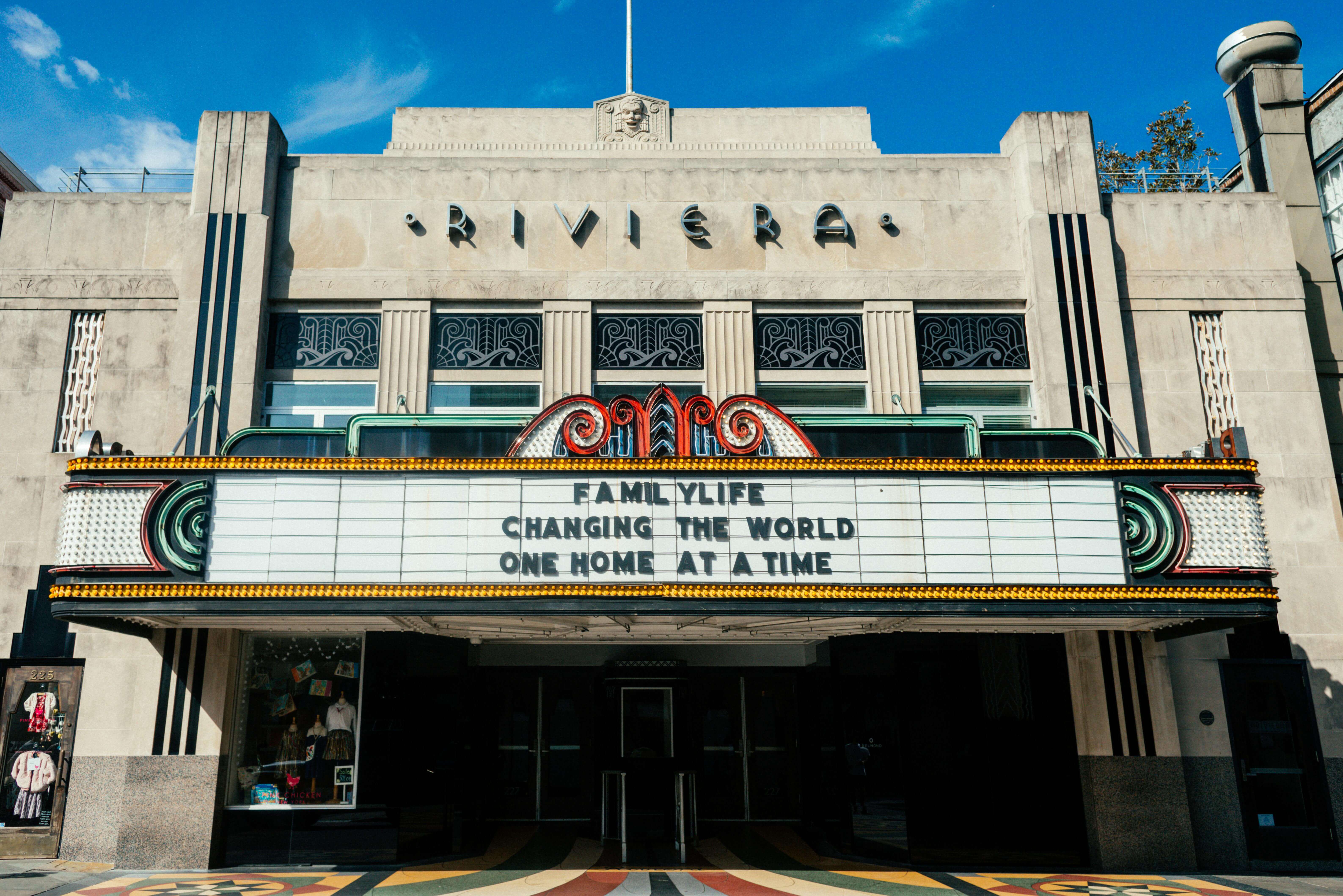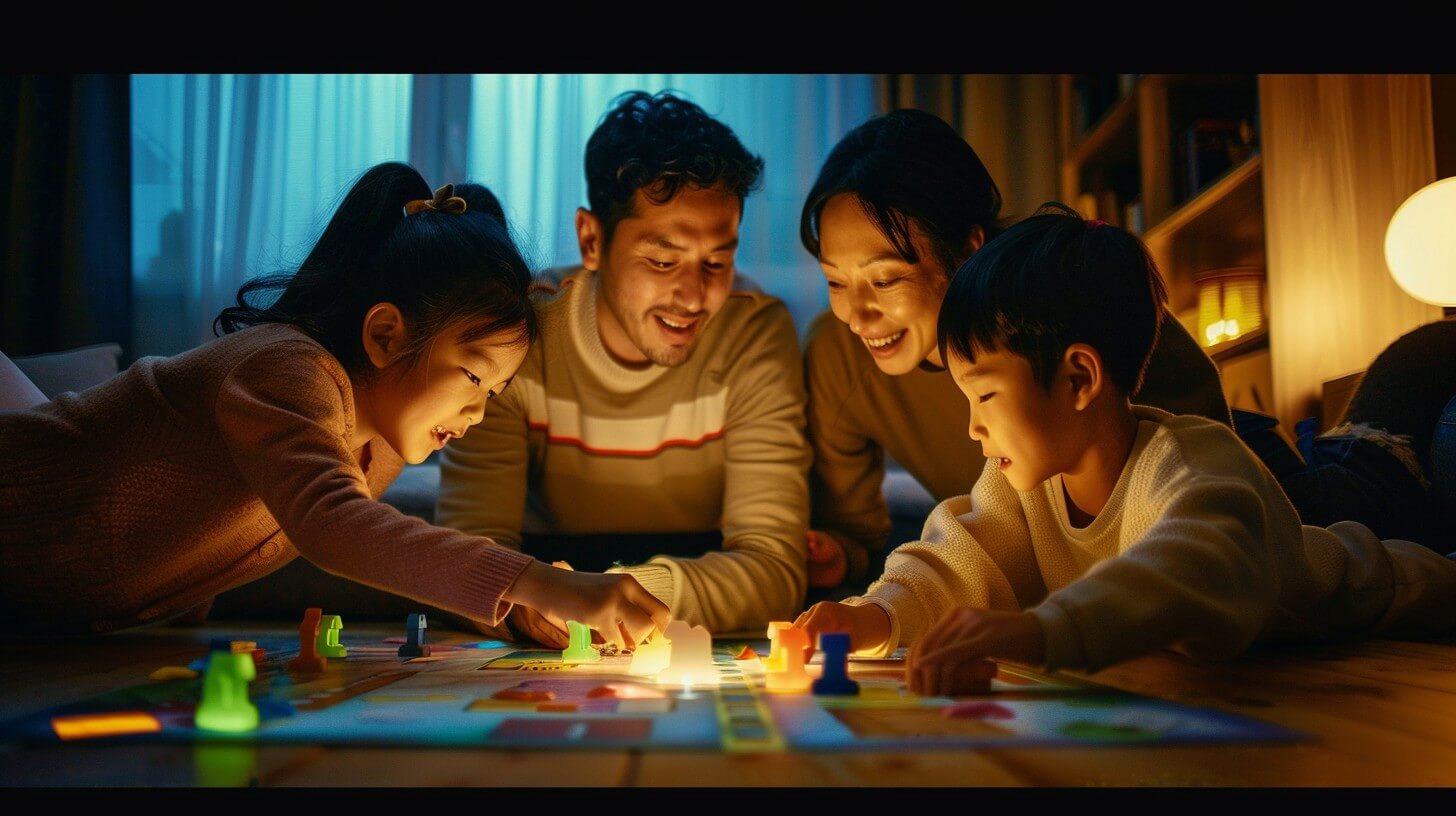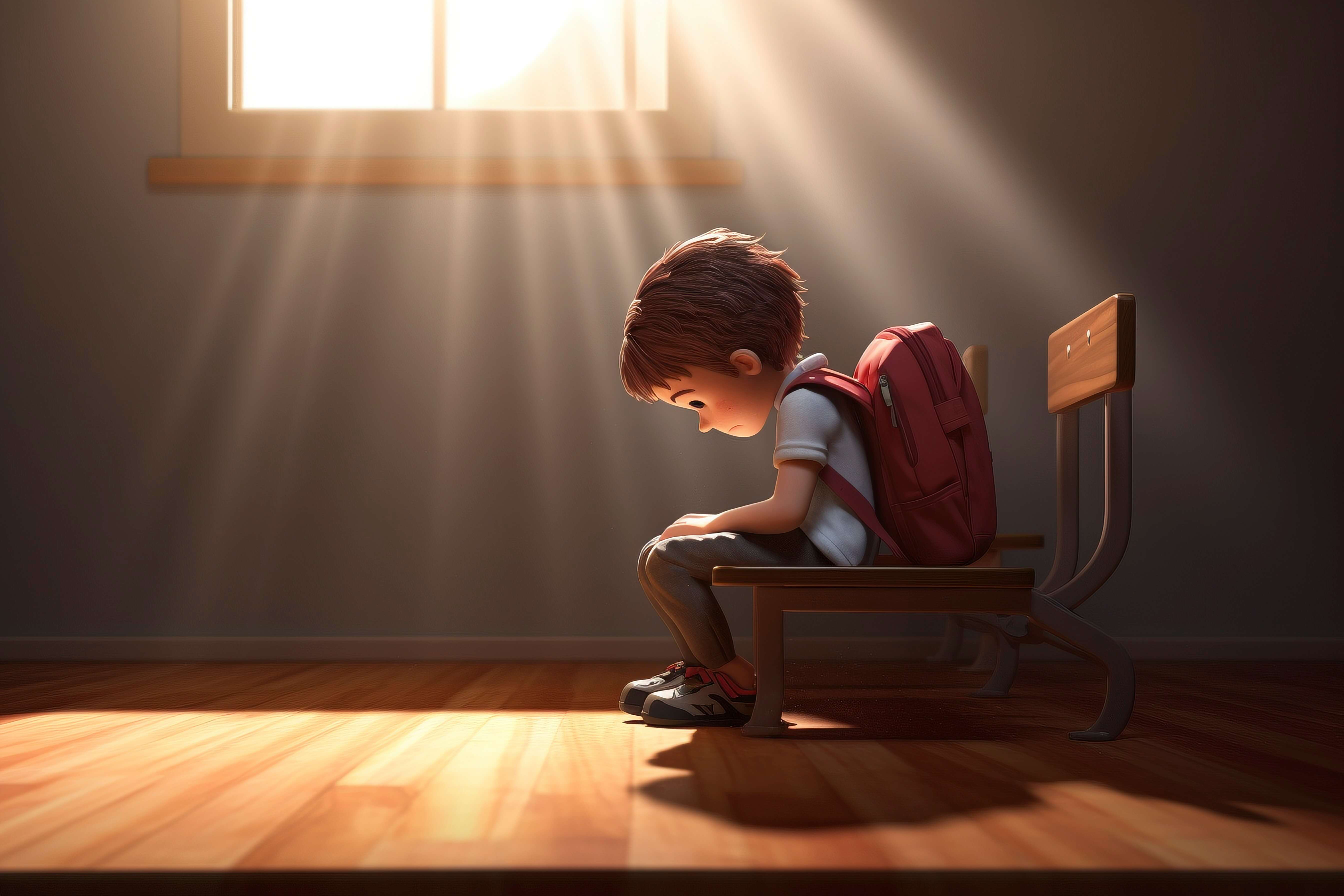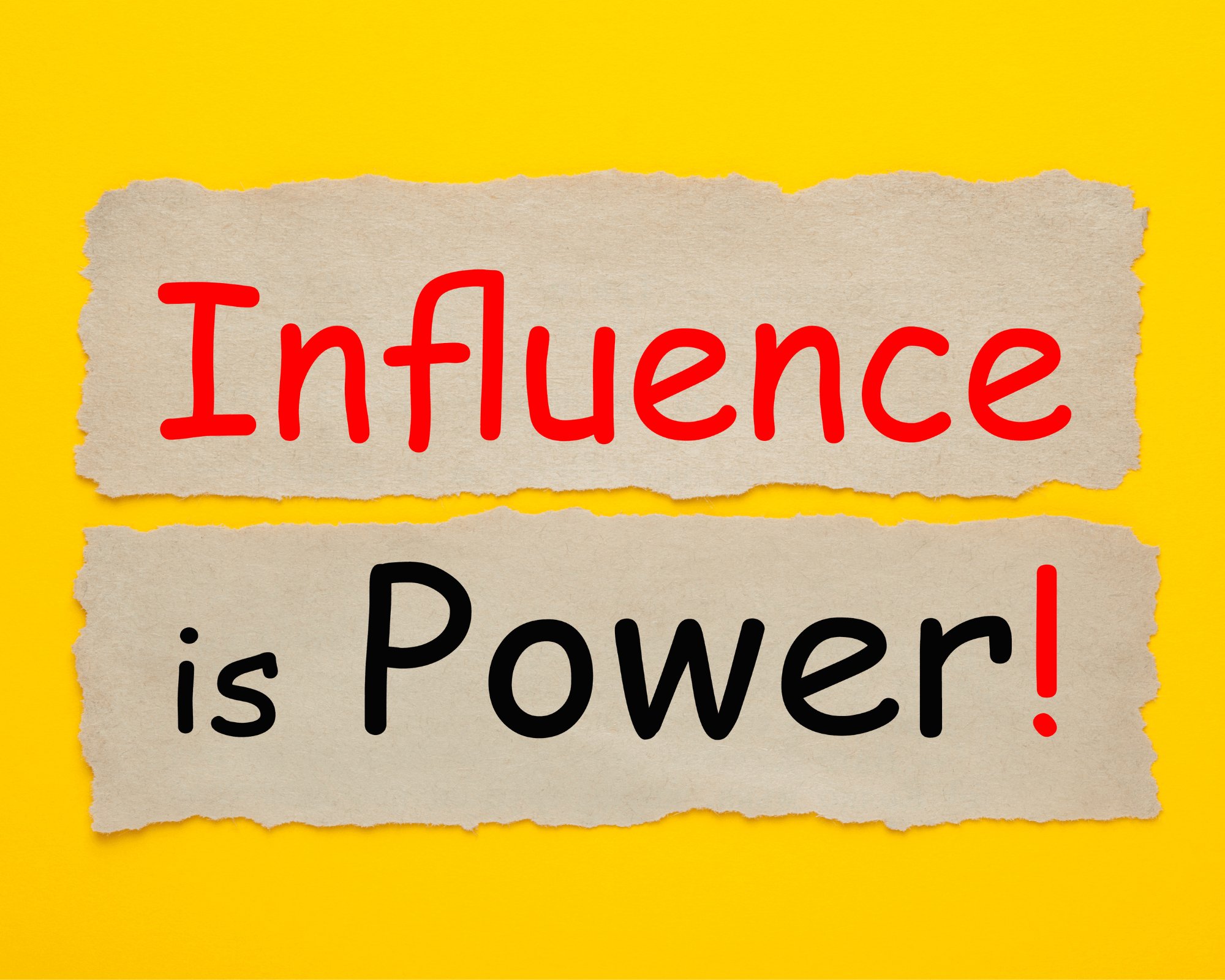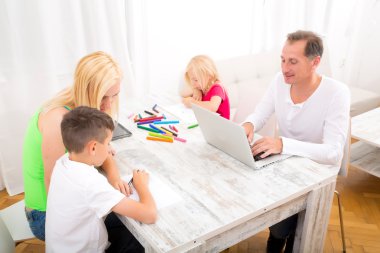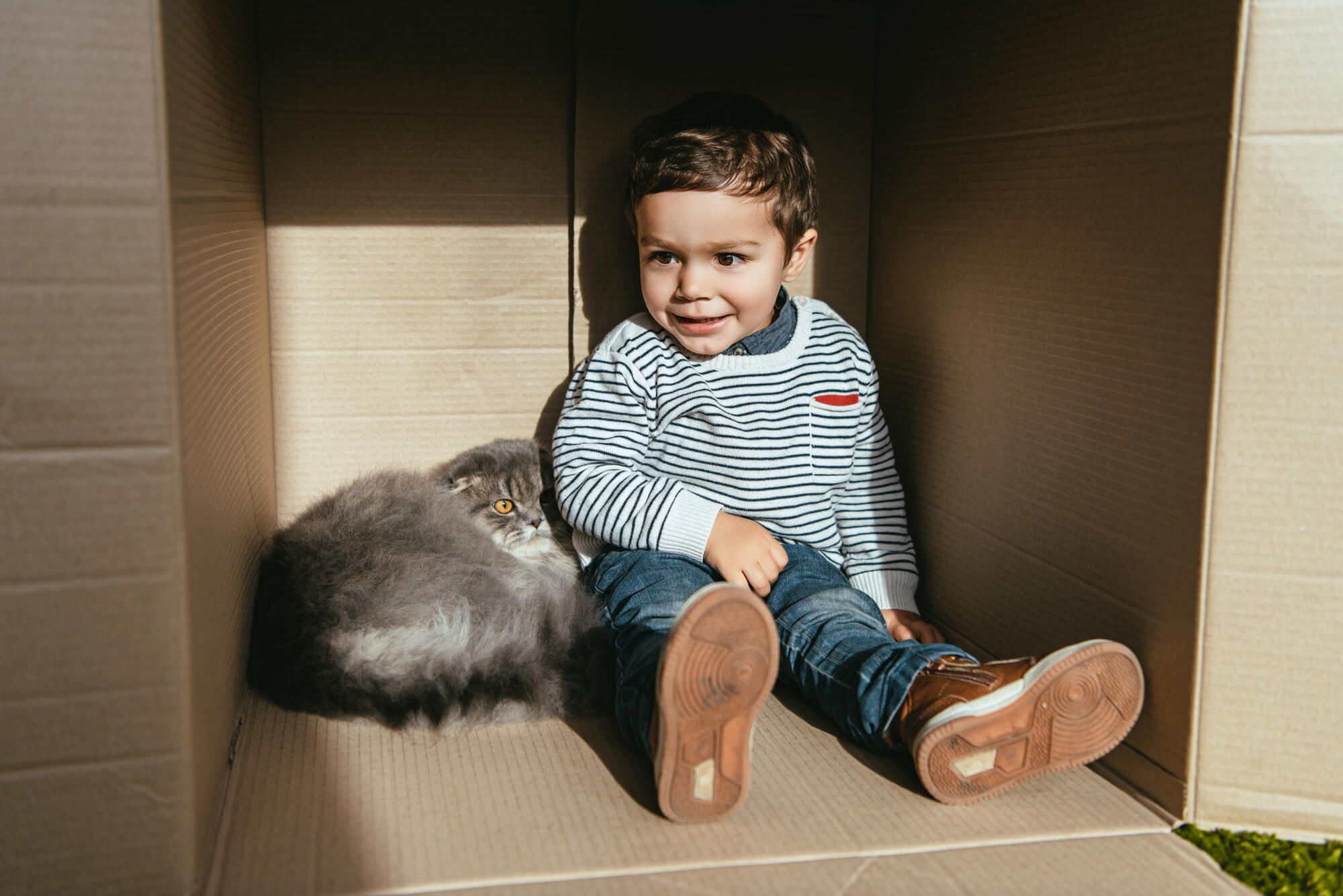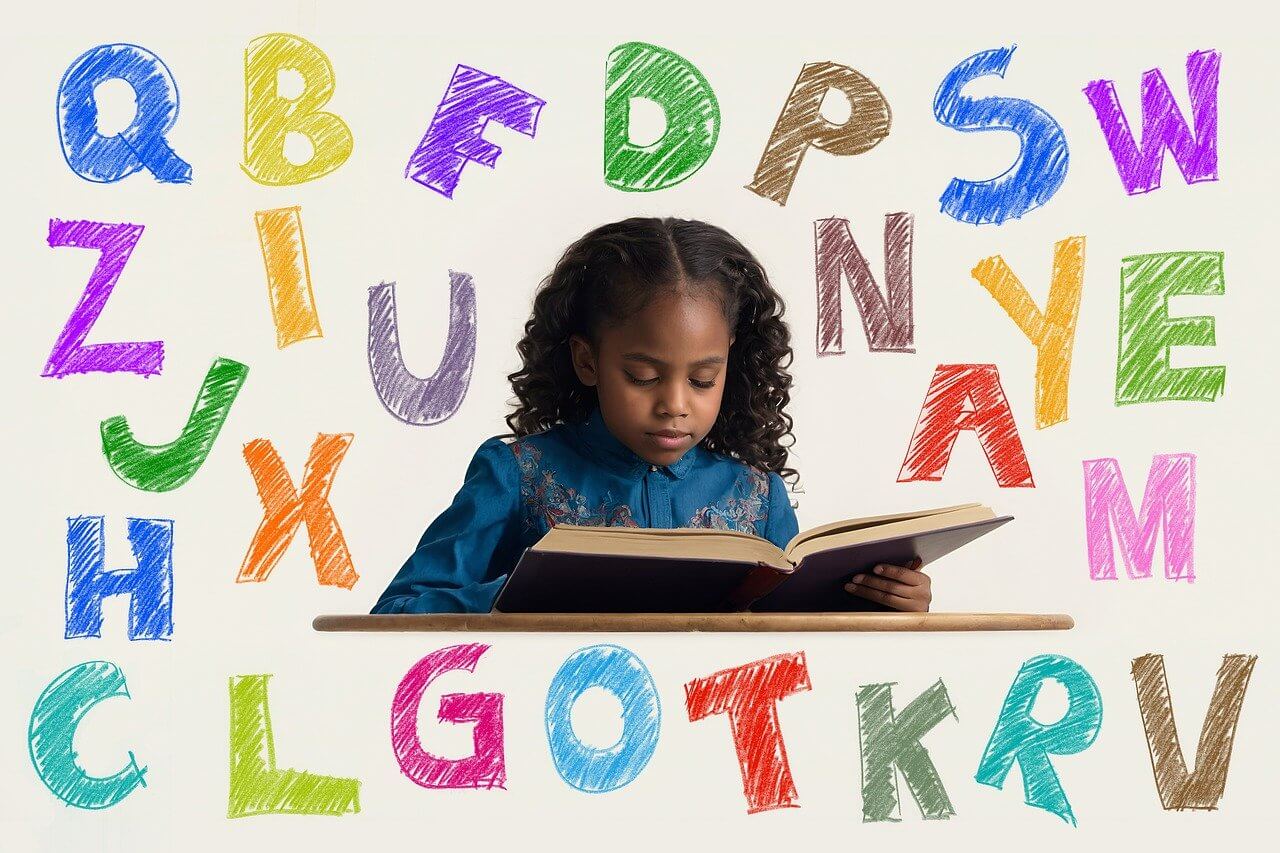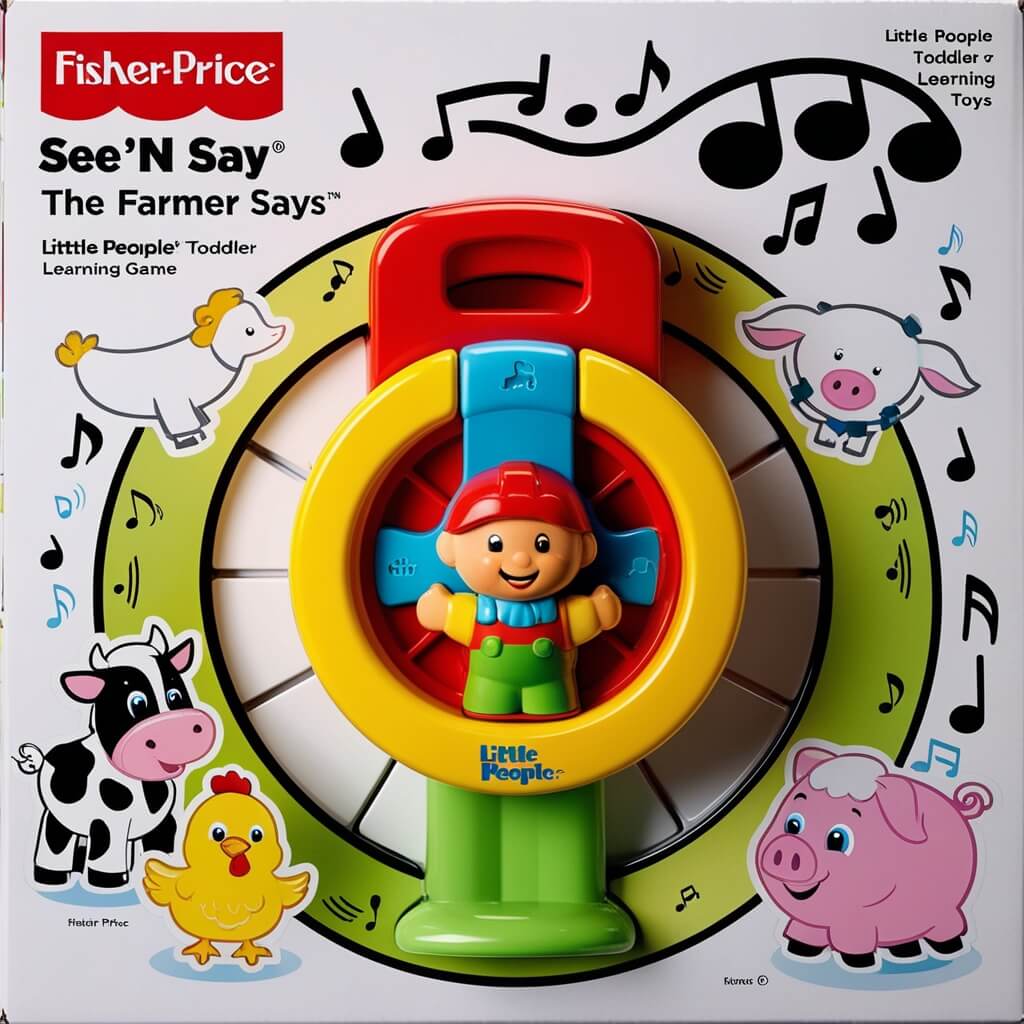Toddler Turbulence: Why the Terrible Twos Aren’t So Terrible After All
Why do some people think we shouldn't call it the terrible twos? Isn't it just an expression?
When you hear the terrible twos, you might picture endless tantrums, mood swings, and moments of pure defiance. But is it really terrible, or are we just seeing this age through a particular lens?
Some experts argue that labeling this phase as "terrible" can set us up with negative expectations, which may make this period feel harder than it needs to be.
In reality, it's simply a normal part of child development, where children are beginning to assert their independence and understand their emotions.
What Is the Terrible Twos?
The terrible twos usually refer to a period when toddlers, around two years old, start to express themselves more boldly, exploring the world, testing limits, and developing a stronger sense of self.
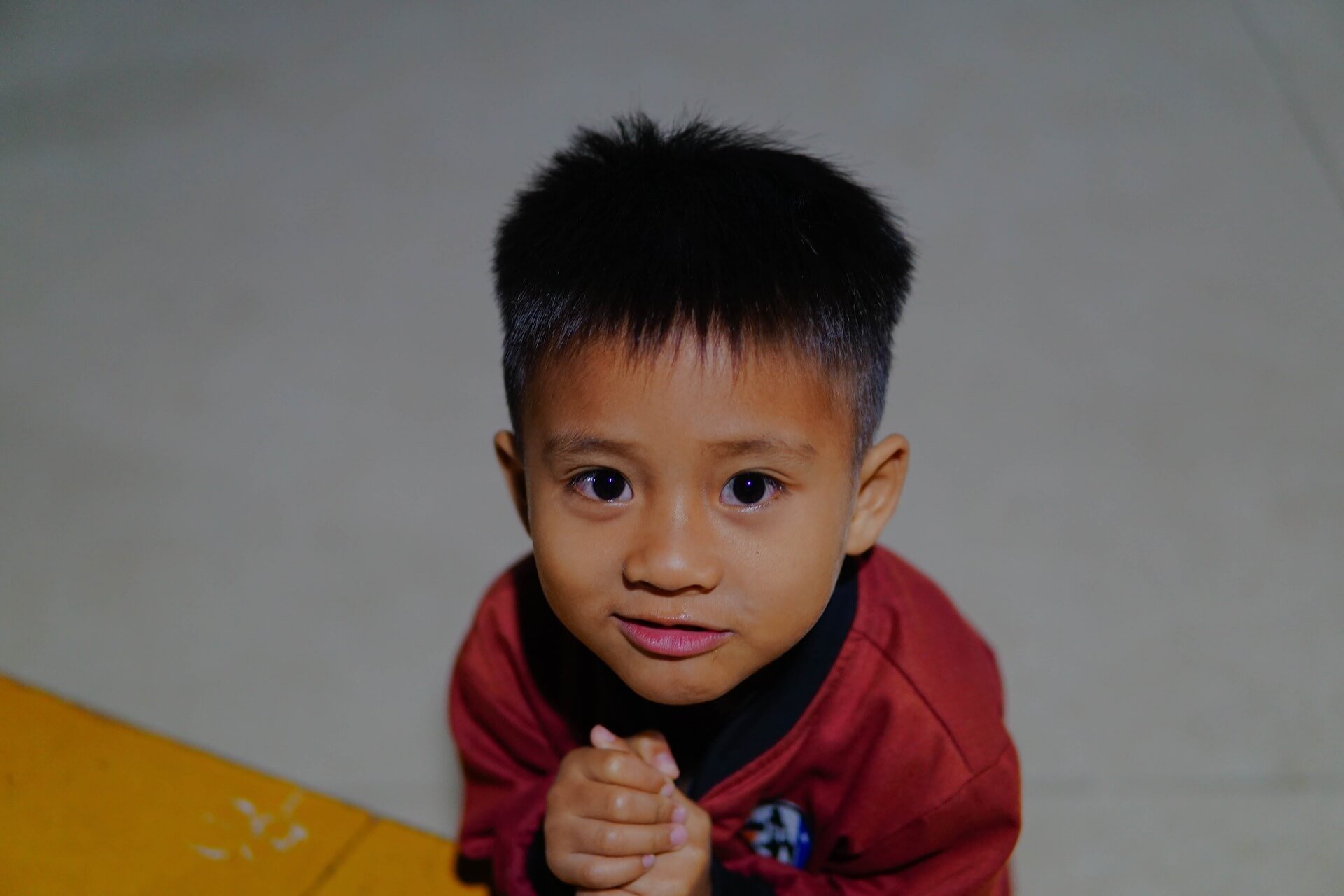 Toddler with his elbows on ledge, hands clasped together while he looks into the camera with a smirk.
Toddler with his elbows on ledge, hands clasped together while he looks into the camera with a smirk.For parents, foster parents, and caregivers, this can be an exciting yet challenging phase because toddlers at this age are learning to navigate their emotions without fully understanding how to handle them.
This phase doesn't magically begin on a child’s second birthday; it can start a little earlier or later.
Some children may go through this stage at 18 months, while others may not experience it until they’re closer to three.
Either way, the common theme is a period where emotions are intense, behaviors are sometimes baffling, and the need for patience is high.
Signs of the Terrible Twos
While every child is different, here are some signs that your child may be entering the terrible twos:
- Frequent Tantrums: This is the classic hallmark of the terrible twos. Tantrums can come out of nowhere and seem to be triggered by small frustrations—like not getting the right color cup or being told it’s time to leave the playground.
This happens because toddlers don’t yet have the language skills to express their feelings fully, leading to meltdowns.
- Increased Independence: “I do it myself!” might become a favorite phrase. As they try to figure out the world on their own terms, they want to do things independently, from dressing themselves to pouring their own cereal.
Independence is wonderful, but it often leads to conflict when they don’t quite have the skills to do what they’re aiming for.
- Testing Boundaries: Expect lots of testing limits. Whether it’s refusing to follow instructions, throwing toys, or running off.
Toddlers are learning about boundaries and figuring out how much control they have over their world.
- Intense Emotions: Toddlers in this stage feel their emotions strongly, and they have no filter. Happiness, anger, frustration, and excitement can turn on and off like a switch.
This emotional rollercoaster is often difficult for both the toddler and the adults around them.
- Selective Listening: Hearing only what they want to hear (or ignoring you entirely) is another classic sign. Toddlers are more focused on their desires and might “tune out” instructions that don’t align with what they want.
How to Handle the Terrible Twos
Here are some practical ways to help you handle the terrible twos and make it a bit more manageable.
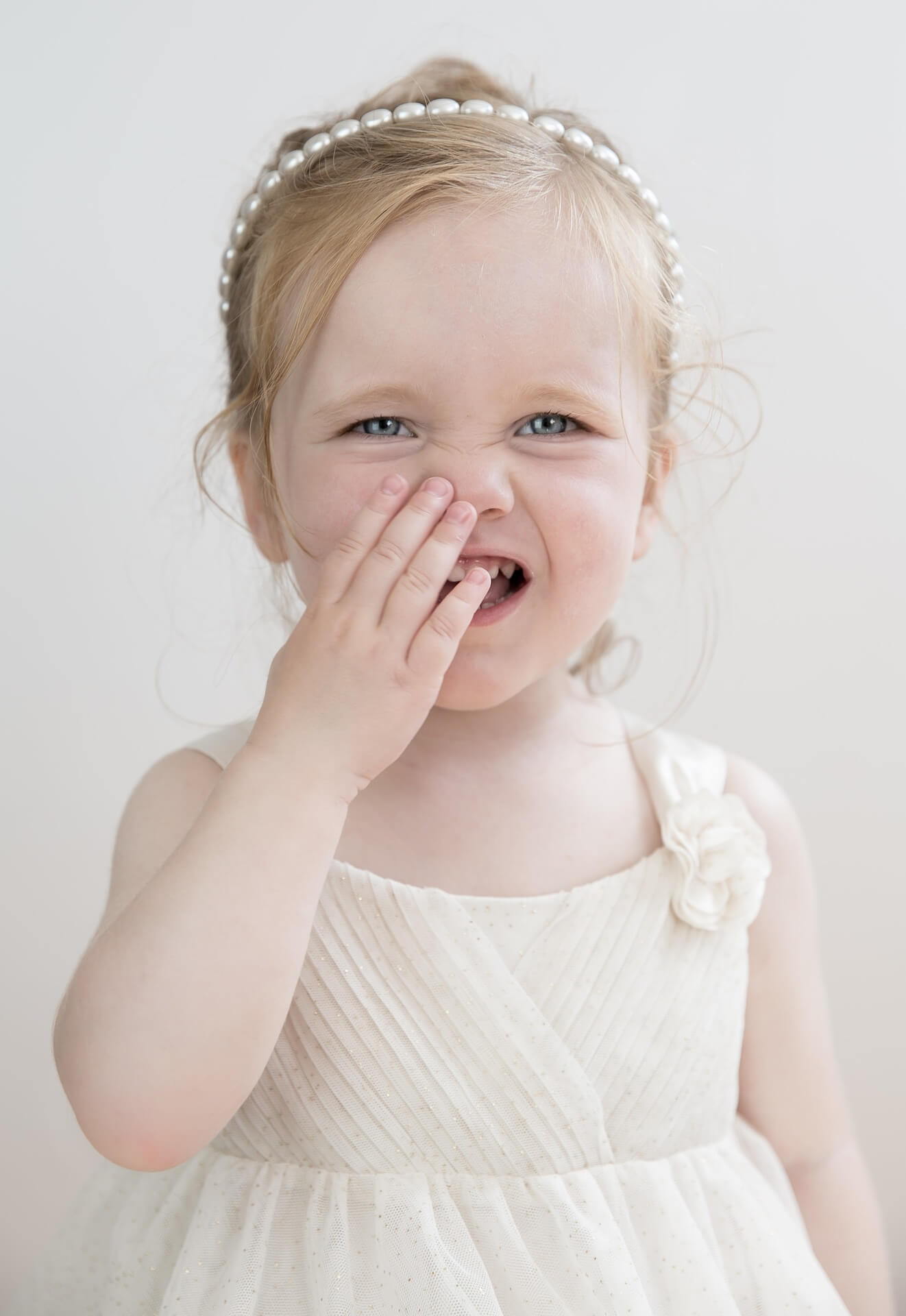 Toddler with her hand on her nose and a smile on her face.
Toddler with her hand on her nose and a smile on her face.1. Stay Calm and Be Patient
Your child will pick up on your energy. If you’re feeling frustrated or impatient, they’re likely to mirror that back to you.
It can be hard to stay calm when faced with a full-blown tantrum, but try taking deep breaths, counting to five, or even stepping away for a moment if it’s safe to do so.
This way you are modelling self-control and giving them a sense of stability.
2. Set Clear Boundaries
Consistency is key during the terrible twos. Setting boundaries and sticking to them helps children understand what is acceptable and what isn’t.
If the rule is “no hitting,” make sure you’re enforcing that every time, and explain it in simple language. For example, “We don’t hit because it hurts.”
Consistent boundaries give them a sense of security and predictability.
3. Offer Choices
Giving your child a sense of control over small things can help reduce power struggles. Let them choose between two options, like, “Would you like apples or bananas for your snack?”
Offering limited choices lets them exercise their independence within safe boundaries and can minimize resistance.
4. Label and Validate Emotions
Young children need help identifying and managing their emotions. When your toddler is frustrated, try acknowledging it with words: “I see you’re really upset because you can’t have more cookies.”
Labeling their emotions can help them feel understood and may lessen the intensity of their reactions. Once they feel heard, they might calm down more easily.
5. Use Redirection
Distraction can work wonders with toddlers. If they’re about to touch something dangerous or are frustrated with a toy, redirect their attention to something else.
For example, if they’re reaching for something fragile, hand them a safe toy or point out something interesting nearby. Redirection shifts their focus and can prevent a potential meltdown.
6. Encourage Physical Activity
Toddlers have a lot of energy, and sometimes that energy comes out in difficult behaviors.
Make sure your child has plenty of opportunities for active play—running, jumping, dancing, or climbing. This is a good way to allow them to get rid of some of that pent-up energy.
Other Tips for the Terrible Twos
- Set Up Routines
Predictability can be very reassuring for toddlers. Kids need to know what to expect so having bedtime routines, mealtimes etc. will help to reduce surprises which can only frustrate some children.
- Limit Screen Time
While a bit of screen time can be fine, too much can lead to overstimulation and increased frustration. Encourage sensory activities like building blocks or simple crafts.
Include interactive play with other kids or parents helping them to develop social and emotional skills.
- Take Care of Yourself, Too
The terrible twos can be as exhausting for you as they are for your child. Make sure you’re getting enough rest, leaning on your support network, and taking time for yourself when possible.
Self-care can make it easier to stay patient and present with your child.
 An adorable toddler sitting on the stairs while playing with the ball from a christmas tree and smiling sneakily.
An adorable toddler sitting on the stairs while playing with the ball from a christmas tree and smiling sneakily.Embracing the Terrible Twos
While it’s easy to see this stage as challenging, remember that it’s also a time of incredible growth.
At this age these children are trying to figure out who they are, how they fit into the world and how to express themselves. Try to celebrate the small wins—those moments of joy, curiosity, and learning.
This stage is temporary. While it can feel overwhelming, keep in mind that these behaviors are a natural part of growing up. Remember, you’re not alone, and this stage, too, shall pass!
Have you had an experience with the "terrible twos" already, or are you just stepping into this phase?
